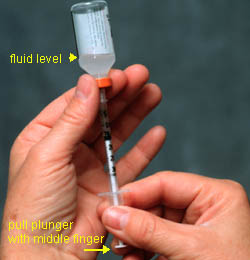“The reality is that I have not seen one single dog or cat on a raw diet diagnosed with diabetes speaks for itself. Switch to raw, stop feeding processed food and you will reduce the chances of diabetes dramatically.” – Dr. Peter Dobais
Fetching Foods provides meals that are high in protein and have almost non-existent carbohydrates. Cats and dogs are designed by nature to metabolize proteins more efficiently than carbohydrates, which sets them apart from omnivores, like humans. They are metabolically adapted to use protein and fat as their energy source and do best when fed a diet that reflects that of their wild ancestors – mostly meat and very little carbohydrate intake.
When cats and dogs eat a high protein, low carbohydrate diet, satiety is reached sooner and glucose is released more slowly by the transformation of protein to glucose (gluconeogenesis). This means cats and dogs will not have a need to “graze” throughout the day. Also, less unused energy (carbs) will be stored as fat. This brings about natural weight loss and lower blood sugar levels. Overweight animals are prone to diabetes (and other conditions), just like humans.
When addressing a pet with diabetes, the single most important dietary change you can make to your pet’s diet is to eliminate sugars. Most commercial pet foods contain an abundance of sugars (starches and carbohydrates) to help shape the food and as a very cheap filler. This is a huge contributing factor to the development of diabetes in dogs and cats.
Carbohydrates, simple starches, and high glycemic foods also contribute to spike blood sugar levels. Even veterinarian approved formulas sold as the solution for diabetic dogs and cats cannot compare to the results seen when choosing to feed raw to your diabetic pet. This is because a proper raw diet eliminates all high-glycemic starches, carbohydrates, and sugars.
Carbs can make your dog or cat fat, increasing the odds of contracting diabetes, because grains and starchy vegetables break down into sugar quickly, and the excess is stored as fat. Fiber is different. Fiber, like psyllium husk, is an indigestible carbohydrate, so it doesn’t contribute calories.
A biologically-appropriate raw diet for our carnivores is an absolute necessity to obtain the best glycemic control, weight control and the best chance of diabetic remission. When fed the proper diet, up to 90% of newly-diagnosed diabetic cats and dogs may become non-diabetic and stay that way. J Rand, “Feline Diabetes Mellitus: Pathogenesis and Principles of Therapy,” Proceedings of the North American Veterinary Conference, 2007, 375-377 and JS Rand, LM Fleeman, HA Farrow, DJ Appleton and R Lederer, “Canine and Feline Diabetes Mellitus: Nature or Nurture?” The Journal of Nutrition 134, 2004, 2072S-2080S.
| Feeding Fetching Foods Just Cat, Premium Cat, and Only Dog is an excellent way to maintain your pet’s weight and help prevent or reverse diabetes. |

In recent years, pet owners have become increasingly concerned about the quality and nutritional value of the food they feed their furry companions. One trend that has been gaining popularity is the use of hydrolyzed ...
Introduction As pet owners, we are constantly seeking ways to improve the health and well-being of our beloved furry companions. One aspect that has gained significant attention in recent years is the use of herbal ...
As we move through this holiday season and towards the new year, we’ve been stuffing our faces as we prepare to stuff our stockings! You might already be at the point where you are loosening ...